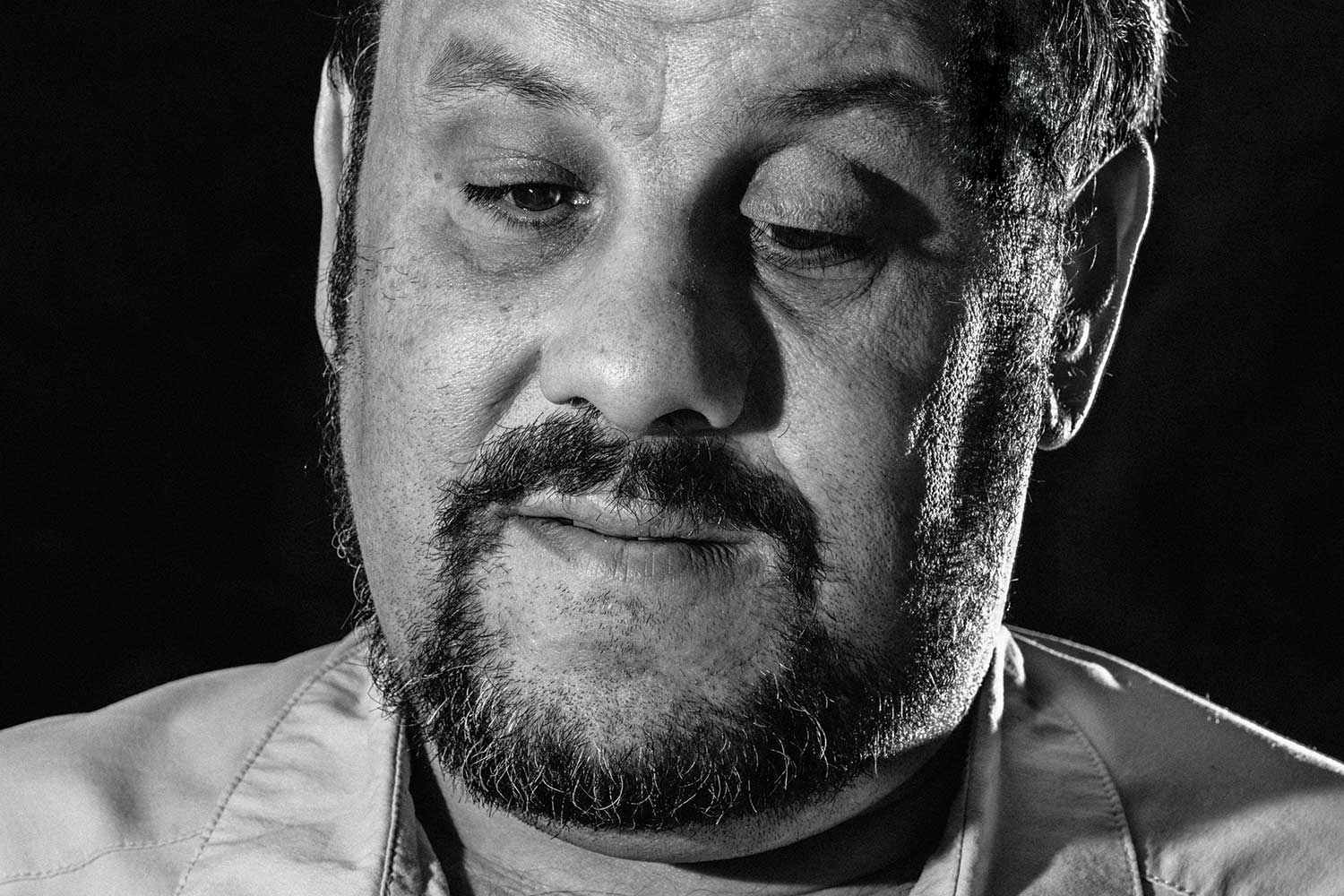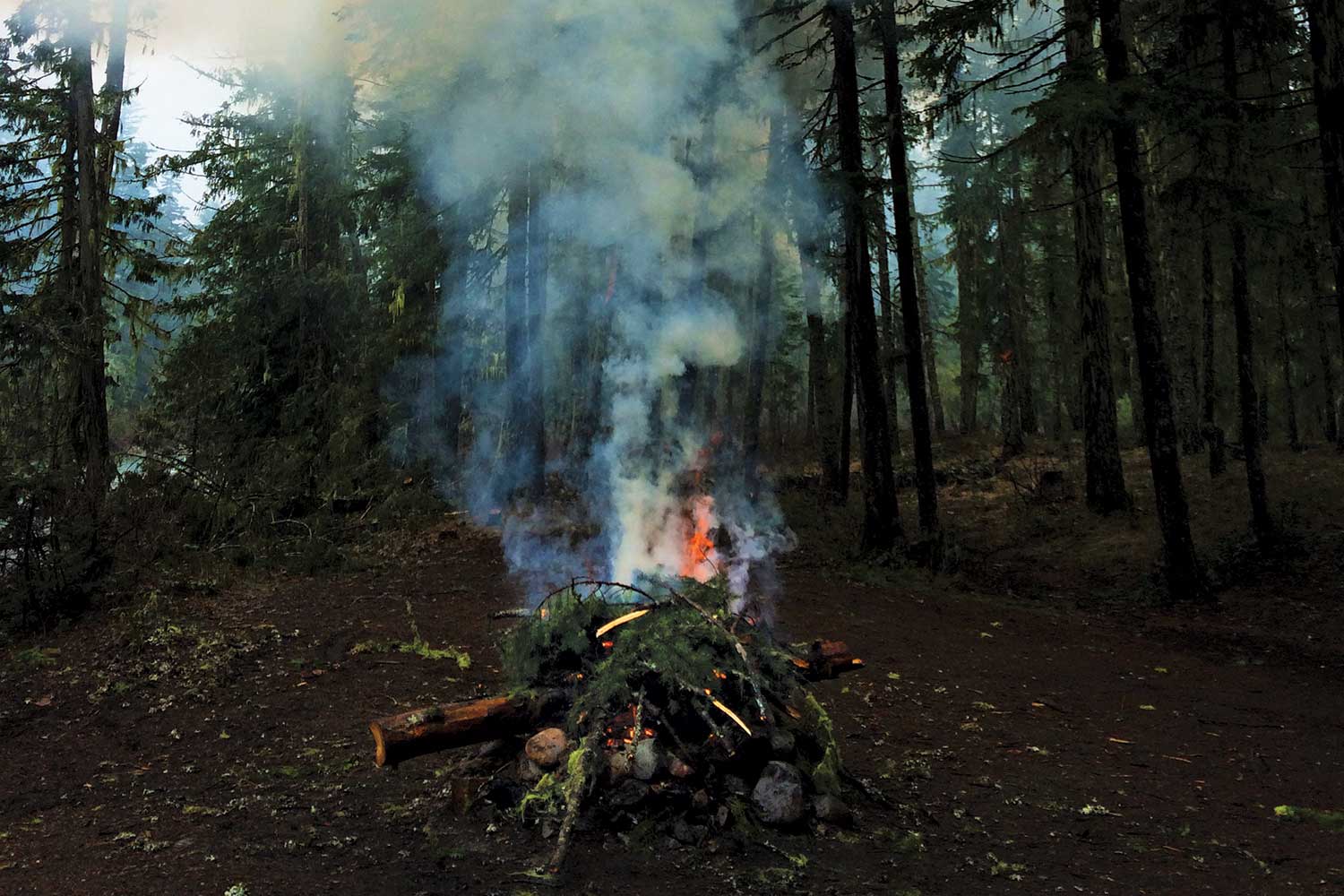Lost and Blind in the Woods

'Peter Baker'
The blazes guiding hikers along the Appalachian Trail help most people, but not me. I can’t see them until they are a foot or so away because I’m legally blind. I have one eye and can’t make out details a few feet away without a monocular. Still, I live to explore new places and enjoy rare experiences just as much as the next hiker.
There were seven of us setting out in April on a 60-mile backpacking trip along the Appalachian Trail from Petite’s Gap to Peaks of Otter Lodge in Virginia. It was something of a homecoming for me. Even with my vision as it is, I’ve hiked almost 1,700 miles of the AT—and even completed this section before, only south to north. This trip was also a test run for an even bigger adventure—the 180-mile cross-country Great Outdoor Challenge that I would be doing in Scotland in a month.
I had everything I needed to hike independently: my backpack, 30°F sleeping bag, a mountaineering tent, several layers of clothing, a map, and dehydrated food to last me the week.
I met the other hikers in an online hiker’s forum, and our loose relationships led to a loose dynamic on the trail. The group ebbed and flowed in size as we meandered through the dense hardwood forest. Some days I walked with the others, sometimes I went alone. Because of my blindness, every step was cautiously placed, especially when on rolling, rocky terrain. Going at my own slower pace suits me, but our group always agreed to meet at the end of the day.
About halfway through our trip, I was solo hiking when I must have stepped onto a game trail. I don’t remember the moment, but I remember stopping and allowing the severity of my situation to sink in. I had no idea where I was. The trail was gone, and heavy leaf litter hindered every attempt to draw some useful clue from the ground that would help me.
I walked back and forth, hoping to intersect the trail. After 20 minutes, I gave up. It was no use, just repetitive forest in all directions. At this point, I didn’t know how far from the trail I’d strayed or in which direction. I tried to stay calm, reassuring myself I’d be OK. I knew that there is seldom water on the AT itself in that section, and I didn’t want to hunker down and wait without water if I wasn’t sure I’d hear somebody if he or she walked past on the trail. So I made the choice to head generally downhill to where I knew the James River would be, in hopes that I’d cross one of its tributaries. After about an hour of picking my way steeply downhill, I heard gurgling. I filtered water, drank deeply, and rested, considering my options.
Just as everyone tells you to do when lost, I decided to stop and wait for someone to find me. Surely, once my fellow hikers realized I wasn’t at the meeting point, they would alert the U.S. Forest Service and local sheriff’s office. I had enough food for a few days and access to water, so, once I found a spot for my tent, I settled in.
I made myself visible by hanging an emergency blanket in the trees. I explored my surroundings to see if I could find a trail, but I never went far; I was nervous to lose my camp. Plus, the terrain was rocky and steep, and a misstep could mean injury. I rationed my food—about three days’ worth of dehydrated meals—and made signal fires.
Day two passed, then day three.I began to wonder if a search party was actually coming.
Though my stress increased with each passing day, the weather was mild and I was OK. Each morning, I packed up all my gear—so I had it with me in case I couldn’t find my way back—and explored a new direction. I was hopeful I’d find a way out, but my fear of getting lost or injured kept me from venturing more than a quarter mile from my camp, which sat on a knoll that I’d marked with cairns of rocks and twigs to guide me back.
Returning unsuccessful, I ate my daily meal, set up camp, and lit another signal fire. Mostly, I waited. It was monotonous, but I knew it was my best chance of survival. Even traipsing around my camp, I managed to get bruises and scrapes. Risking injury or losing my camp with my dwindling food rations was not an option.
Day four passed, then day five. Maybe the rescue team isn’t coming after all. If no one was on the way, I’d have to save myself. I started planning my escape. I figured that if I followed the stream, it would eventually lead to the James River, and from there I could hopefully find a trail, a road, or a home.
Tomorrow will be the day. If no one comes to get me tomorrow, I am getting out myself.

I awoke depressed on my sixth day alone. I was hungry, my food was gone, and no one was coming. In a last-ditch effort to be found, I cleared some land to make a bigger fire (but not so big that I couldn’t easily put it out) and planned my exit.
A few hours later, I heard someone, and I will never forget the joy I felt. A team of firefighters approached the camp, looking for the blaze. They found me, too. (They weren’t part of the rescue effort.) I told them I’d been lost. A couple of them put out the fire while others helped me pack up for the final time. I was thrilled to be with people who knew where we were. In just 200 yards, we reached a hunting trail and, 30 minutes later, we came to a trailhead.
Though hungry, I was mostly just relieved. As it turned out, my hiking group thought we were meeting at the end. When they finished, they realized something was wrong and called for help. About 130 searchers were out looking for me, but they’d only started two days earlier. Waiting was the hardest part.
Key Skills: Get Found
Stay calm. When you think you’re lost, stop and have some water and a snack. This prevents rash decision-making.
Retrace your footsteps. This strategy comes with a caveat: You have to admit when you’re just plain lost and then stop. Dead-reckoning back to where you think the trail is wastes time and energy.
Use your map. With decent map skills in open terrain, you can locate yourself. For a primer on map navigation go to backpacker.com/navigation.
Stay put. If someone has your itinerary and will alert rescue authorities when you don’t check in, wait in a safe place. SAR teams often sweep certain areas then move on. By wandering, you risk entering an area they’ve already cleared.
Be obvious. Setting fires, signaling with a mirror, hanging shiny objects on trees, and blowing a whistle can broadcast your position to nearby rescuers.